The Biggest Dog on the Block
As the news was broadcasted, some Americans cheered at the killing of Osama. Sure, let the rat rot. But please have no illusions about who is the world’s largest terrorist. All the world terrorists together have not brought about as much harm and destruction, of property and lives, as the biggest dog on the block.
Let us have a quick look into the history of the U.S. and its growing to be the biggest dog on the block.
In the U.S., a huge part of the money the IRS takes out of our paychecks goes to support the military. Military spending adds up to more than 50% of the Federal Government’s annual discretionary spending.
The U.S. maintains the largest and most powerful military in history. U.S. warships dominate the oceans, its missiles and bombers can strike targets on every continent, and hundreds of thousands of U.S. troops are stationed overseas. Every few years the U.S. sends soldiers, warships, and warplanes to fight in distant countries.
Three centuries ago, the U.S. was a collection of thirteen small colonies on the Atlantic coast of North America. Today it dominates the globe in a way that even the most powerful of past empires could not have imagined.
The path to world power has, however, not been peaceful.
The American revolutionaries who rose up against King George in 1776 spoke eloquently about the right of every nation to determine its own destiny. Unfortunately, after they won the right to determine their own destiny they thought they should determine everyone else’s too. The leaders of the newly independent colonies believed that they were preordained to rule all of North America. This was so obvious to them that they called it “Manifest Destiny.” Representative Giles of Maryland said, “We must march from ocean to ocean. It is the destiny of the white race.”
This soon led to genocidal wars against the Native American peoples. The U.S. army ruthlessly seized their land, driving them west and slaughtering those who resisted. The ones that were left to live were confined to reservations.
By 1848 the U.S. had seized nearly half of Mexico’s territory. In Congress, the war was justified with speeches about the glory of expanding “Anglo-Saxon democracy,” but in truth it was the Southern slave owners’ thirst for land and the lure of Western gold that inspired these speeches.
General Zachary Taylor ordered scores of U.S. soldiers executed for refusing to fight in Mexico.
With their domain now stretching from coast to coast the “Manifest Destiny” crowd began to dream of an overseas empire. Col. Charles Denby, a railroad magnate and an ardent expansionist, argued: “Our condition at home is forcing us to commercial expansion. Day by day, production is exceeding home consumption. We are after markets, the greatest markets in the world.” Senator Orville Platt said: “I firmly believe that when any territory outside the present territorial limits of the U.S. becomes necessary for our defense or essential for our commercial development, we ought to lose no time in acquiring it.”
The next year, taking a fancy to several Spanish colonies, including Cuba and the Philippines, the U.S. declared war on Spain. Rebel armies were already fighting for independence in both countries and Spain was on the verge of defeat. Washington declared that it was on the rebels’ side and Spain quickly capitulated. But the U.S. soon made it clear that it had no intention of leaving. Senator Albert Beveridge said: “The Philippines are ours forever…and just beyond the Philippines are China’s illimitable markets…the Pacific is our ocean.”
Elaborate racist theories were invented to justify colonialism. “We are the ruling race of the world …. We will not renounce our part in the mission of our race, trustee, under God of the civilization of the world … He has marked us as his chosen people … He has made us adept in government that we may administer government among savage and senile peoples.” (Senator Albert Beveridge)
But the Filipinos didn’t share the views of Senator Beveridge and his buddies. They fought the new invaders just as they had fought the Spanish. The U.S. subjugated the Filipinos with brute force. U.S. soldiers were ordered to burn all and kill all. By the time the Filipinos were defeated, 600,000 had died.
The Philippines, Puerto Rico, and Guam were made into U.S. colonies in 1898. Cuba was formally given its independence, but along with it, the Cubans were given the Platt Amendment, which stipulated that the U.S. Navy would operate a base in Cuba forever, that the U.S. Marines would intervene at will, and that Washington would determine Cuba’s foreign and financial policies.
During the same period, the U.S. overthrew Hawaii’s Queen Lilivokalani and transformed these unspoiled Pacific islands into a U.S. Navy base surrounded by Dole and Del Monte plantations.
In 1903, after Theodore Roosevelt became president, he sent gunboats to secure Panama’s separation from Columbia because the Columbian government had refused Roosevelt’s terms for building the Panama canal.
Then Uncle Sam began sending his Marines everywhere. The Marines went to China, Russia, North Africa, Mexico, Central America, and the Caribbean. Between 1898 and 1934, the Marines invaded Cuba 4 times, Nicaragua 5 times, Honduras 7 times, the Dominican Republic 4 times, Haiti twice, Guatemala once, Panama twice, Mexico 3 times, and Columbia 4 times! In many countries, the Marines stayed on as an occupying army, sometimes for decades. When the Marines finally went home, they typically left the countries they had occupied in the hands of a friendly dictator, armed to the teeth to suppress his own people. Behind the Marines came legions of U.S. business executives ready not only to sell their goods but also to set up plantations, drill oil wells, and stake out mining claims. The Marines returned when called upon to enforce slave-like working conditions and put down strikes, protests, and rebellions. A reporter described what took place after U.S. troops landed in Haiti in 1915 to put down a peasant rebellion: “American marines opened fire with machine guns from airplanes on defenseless Haitian villages, killing men, women, and children in the open market places for sport.” 50,000 Haitians were killed.
General Smedley Butler, after retiring, described his career as follows: “I spent 33 years and 4 months in active military service … And during that period I spent most of my time as a high-class muscle man for Big Business, for Wall Street and the bankers. In short, I was a racketeer, a gangster for capitalism. Thus, I helped make Mexico, and especially Tampico, safe for American oil interests in 1914. I helped make Haiti and Cuba a decent place for the National City Bank boys to collect revenues in. I helped in the raping of half a dozen Central American republics for the benefit of Wall Street. I helped purify Nicaragua for the international banking house of Brown Brothers in 1902-1912. I brought light to the Dominican Republic for American sugar interests in 1916. I helped make Honduras right for American fruit companies in 1903. In China in 1927, I helped see to it that Standard Oil went on its way unmolested.
World War I
World War I was a horrific battle among the European colonial powers over how to divide up the world. When President Woodrow Wilson decided to enter the fray, he told the American people that he was sending troops to Europe to “make the world safe for democracy.” But what Wilson was really after was what he considered to be the United States’ fair share of of the spoils. Wilson’s ambassador to England said rather forthrightly that the U.S. would declare war on Germany because it was “… the only way of maintaining our present pre-eminent trade status.” (Ambassador W.H.) For this, 130,274 U.S. soldiers were sent to their deaths.
“Our boys were sent off to die with beautiful ideals painted in front of them. No one told them that dollars and cents were the real reason they were marching off to kill and die.” (General Smedley Butler, 1934)
World War II
200,000 people were killed instantaneously when the U.S. dropped nuclear bombs first on Hiroshima and then on Nagasaki. Tens of thousands more died later from radiation poisoning. “We pray that God might guide us to use [the Bomb] in his ways and for His purposes.” said President Harry Truman. The defeat of Japan had already been assured before the bombs were dropped. Their main purpose was to demonstrate to the world the deadly power of America’s new weapon of mass destruction. World War II left the U.S. in a position of political, economic and military superiority.
“We must set the pace and assume the responsibility of the majority stockholder in this corporation known as the world.” (Leo Welch, former Chairman of the Board, Standard Oil of New Jersey (now Exxon) 1946)
The U.S. eagerly assumed responsibility for determining the economic policies and selecting the management of what it considered to be the subsidiary companies that made up the “corporation known as the world.” But this didn’t go over too well in many nations that considered themselves to be sovereign countries. I think you can guess what happened to them.
Cold War
The United States, however, had to contend with the Soviet Union, which had also emerged from the Second World War as a world power. For the next 45 years, the world was caught up in a global turf battle between the “two superpowers.” The U.S. was always much stronger than its Soviet adversary, but both countries maintained huge military forces to defend and expand their own “spheres of influence.” The contention between the two powers was called the “Cold War” because they never directly engaged each other in battle. The “Cold War” was marked by plenty of violence in other countries though. Typically, the two superpowers lined up on opposite sides of every conflict.
Korea, 1950-1953
After World War II, the ambitious plans of the U.S. State Department for Asia and the Pacific were upset by revolutions and anti-colonial wars from China to Malaysia. U.S. warships, bombers, and artillery reduced much of Korea to rubble. Over 4,500,000 Koreans died; three out of four were civilians. 54,000 U.S. soldiers returned home in coffins. But the U.S. military, for all of its technological superiority, did not prevail. After 3 years of intense warfare, a cease-fire was negotiated. Korea was left divided and some 40,000 U.S. troops remained in Southern Korea.
Dominican Republic, 1965
After a U.S. backed military coup, Dominicans rose up to demand the reinstatement of the overthrown president (who they had elected in a popular vote). Washington, however, was determined to keep its men in power, no matter who the Dominicans voted for. 22,000 U.S. troops were sent to suppress the uprising. 3,000 people were gunned down in the streets of Santo Domingo.
Vietnam, 1964-1973
400,000 tons of napalm were rained down on the tiny country. Agent Orange and other toxic herbicides were used to destroy millions of acres of farmland and forests. Villages were burned to the ground and their residents massacred. Altogether, two million people died in the Indochina War, most of them civilians killed by U.S. bombs and bullets. Almost 60,000 U.S. soldiers were killed and 300,000 wounded.
Lebanon, 1982-1983
After the Israeli invasion of Lebanon, the U.S. Marines intervened directly in the Lebanese Civil War, taking the side of Israel and the right-wing Falange militia which had just massacred 2,000 Palestinian civilians.
Grenada, 1983
According to Ronald Reagan, Grenada, population of about 110,000, represented a threat to U.S. security. So he ordered the Pentagon to seize the island and install a new government more to his liking. “A lovely piece of real estate.” said Secretary of State George Schultz. He also said, “I’m a Bechtel man and a Pentagon fan.”
Libya, 1986
Washington loved King Idris, the Libyan monarch who happily turned over his country’s oil reserves to Standard Oil for next to nothing. It hates Col. Qadhafi, who threw the King out. In 1986, Reagan ordered U.S. warplanes to bomb the Libyan capital, Tripoli, claiming that Qadhafi was responsible for a bomb attack at a German disco that killed two U.S. soldiers. It’s unlikely that very many of the hundreds of Libyans killed or injured in the U.S. bombing raid knew anything about the German bombing.
Behind The Scenes
So far we’ve recounted wars that have involved U.S. troops. But there are many other wars in which Washington was involved behind the scenes.
After World War II, Britain was compelled to dispose of its colonial empire in the Middle East. It decided to give a big chunk of the land known as Palestine to European Jews displaced by the Holocaust. The problem was that there were already people living there. The result has been five decades of violence and war. Hundreds of thousands of Palestinians were driven from their homes in what became Israel. The center of the conflict has been the West Bank and Gaza, where Palestinians have lived for decades under Israeli occupation.
The U.S. provides crucial political support and billions of dollars a year in aid to Israel, including the most advanced weaponry. More than three decades of occupation of the West Bank and Gaza have produced bitter anger not only at Israel but also at the United States. As Palestinian teenagers continue to die in confrontations with the Israeli Army, this anger only grows.
The bloody, U.S.-backed, counter-insurgency wars continue in Columbia, Mexico, Peru, the Philippines and other countries. In Colombia, for example, a corrupt U.S.-backed army fights alongside paramilitary forces that have slaughtered whole villages and hundreds of opposition union leaders and politicians. The U.S. has been getting more deeply involved, under the cover of the “War on Drugs,” providing billions of dollars of arms used to continue the killing.
The CIA and the Pentagon have also organized proxy armies to overthrow governments that are not well liked in Washington. In 1961, for instance, U.S. warships ferried a small army of mercenaries to Cuba, hoping to reverse the Cuban Revolution. They landed at the Bay of Pigs. It was the fifth U.S. invasion of Cuba this century. But this time the U.S. was defeated.
In the 1970s and ’80s, the CIA was particularly busy financing, training and arming guerilla armies around the world.
For years the U.S. backed Portugal’s efforts to hang on to its colonies in southern Africa, helping it stave off independence wars in Angola and Mozambique. In 1975, after a democratic revolution in Portugal, the Portuguese called it quits. But Washington didn’t! Instead, it teamed up with the apartheid regime in South Africa to supply a mercenary army to fight the new government in independent Angola. And in Mozambique, top U.S. and South African politicians and ex-military officers sponsored a particularly brutal bunch of mercenaries who massacred tens of thousands of peasants.
And then, of course, there are the “contras.” After the Nicaraguan people overthrew the U.S.-backed dictatorship of the Somoza family in 1979, the CIA gathered together the remnants of Somoza’s hated National Guard and sent them back to Nicaragua with all the weapons they could carry–to loot, burn, and kill.
Let’s Finish
This article is now getting a bit too long, but be sure that the same government is still today running a business rather than a country inhabited by people, people that need to be educated, people who for the most part do not know that their material prosperity, which is by the way now dwindling fast, is largely resting on exploitation, murder, crime, immorality, torture, etc, etc, etc. Having lived in a number of countries on several continents, it seems that the U.S. is not an exceptional country – they all appear to be doing the same thing: brainwashing the common folks, covering up the ugly reality with fairy tales about standing up for democracy, freedom, and human rights. The funniest of all cover-ups is the one of war on terror. After reading everything above, terrorist groups, such as Osama’s Al-Qaeda, seem puny.
And they are so good at misleading people who by watching the oil companies-owned television stations are totally convinced that these wars are fought for good causes. They are so convinced of this that they are ready to defend the concept even by brute force. Watch out! If something happens to me, it will simply go to support what I have just stated.
“USA, USA!!!” they shouted when Osama was proclaimed dead. What is USA?
The brief history of the U.S.’s ascension to power presented in this article was taken from Ph.D. Joel Andreas’s Addicted To War. At the end of the book, which I highly recommend everyone to read, references are given for all the historical events so that you can see their authenticity and accuracy.

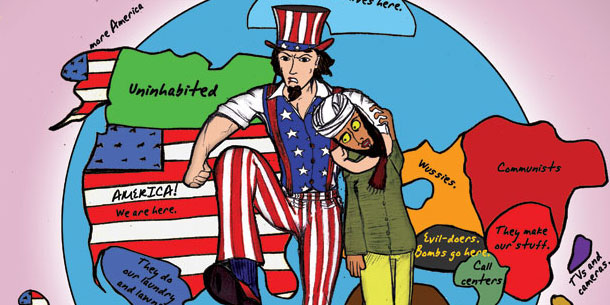
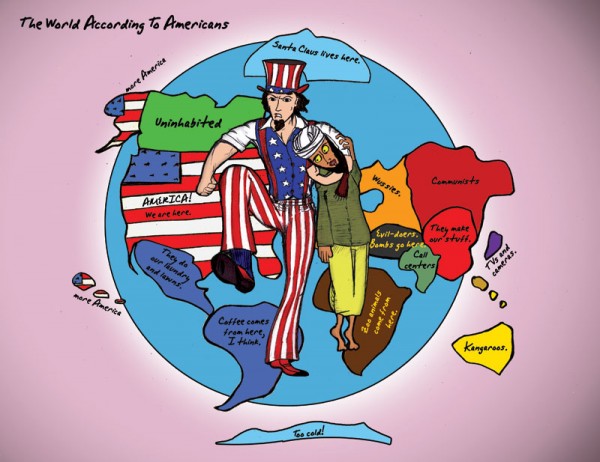
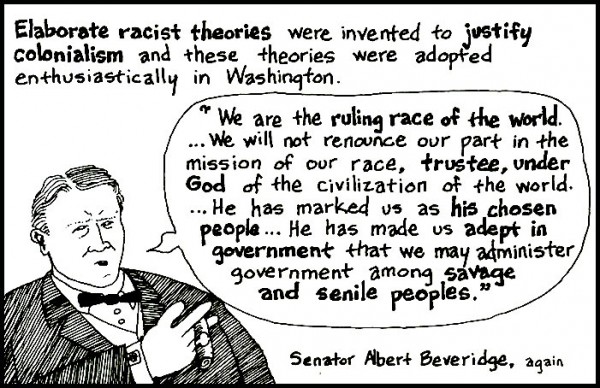
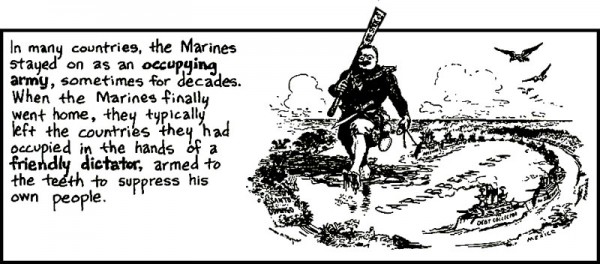

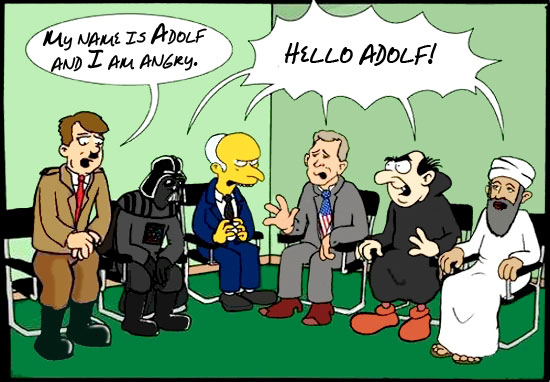

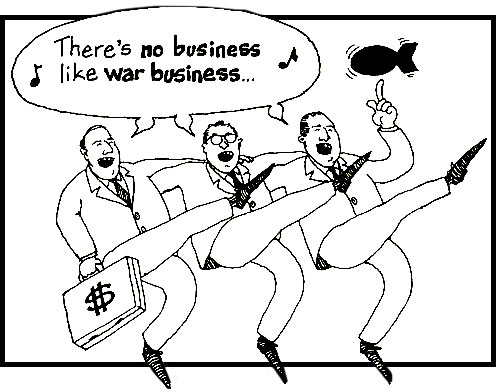
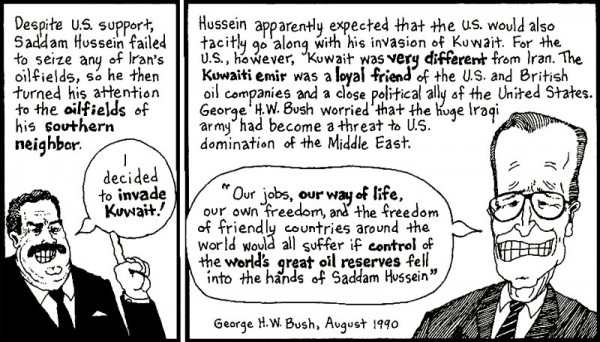
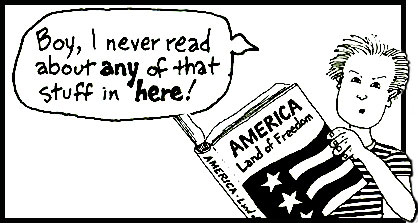
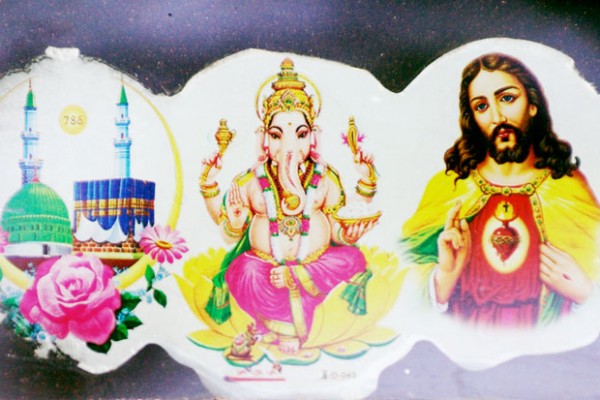
af
wrg